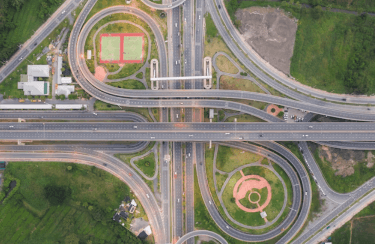Question
a.
circular orbit
b.
sun-synchronous orbit
c.
near polar orbit
d.
None of these
Posted under Civil Engineering
Interact with the Community - Share Your Thoughts
Uncertain About the Answer? Seek Clarification Here.
Understand the Explanation? Include it Here.
Q. For interpolation of satellite data used for monitoring dynamic changes that occure on the earth surface, the most suitable orbit for the satellite is :
Similar Questions
Explore Relevant Multiple Choice Questions (MCQs)
Q. The altitudinal distance of a geostationary satelite from the earth is about:
View solution
Q. Geodimeter is based on :
View solution
Q. Which one of the following statement is incorrect regarding the electromagnetic radiation?
View solution
Q. Consider the following statements regarding the satellite imaging :
1. The satellite orbit is fixed in the inertial space
2. During successive across-track imaging, the earth rotates beneath the sensor
3. The satellite images a skewed area
Which one of the following statements is/are correct ?
View solution
Q. Which one of the following statements is correct?
View solution
Q. In GPS, receivers are used are ;
View solution
Q. Pick up the correct statement from the following :
View solution
Q. Earth observations from a satellite platform provides :
View solution
Q. Due to scan geometery of a satellite sensor:
View solution
Q. 'A time varrying electric field produces a magnetic field.' This phenemenon is called:
View solution
Q. The code based GPS receivers are generally used for:
View solution
Q. Critical angle of electromagnetic radiation takes place if
View solution
Q. The GPS space segment consists of Navigation Satellite Timing and Ranging whose number is :
View solution
Q. Pick up the correct statement from the following:
View solution
Q. Which one of the following geometric errors of satellite sensors is random ?
View solution
Q. The optical property of a water body depends on:
View solution
Q. Crop Acreage and Production Estimation (CAPE) was funded and taken up in 1983 by:
View solution
Q. Electromagnetic spectrum contains :
View solution
Q. The ratio of the total solar radiant energy returned by a planetary body to the total radiant energy incident on the body, the called:
View solution
Q. Spatial variation in horizontal and vertical directions, is caused due to :
View solution
Recommended Subjects
Are you eager to expand your knowledge beyond Civil Engineering? We've handpicked a range of related categories that you might find intriguing.
Click on the categories below to discover a wealth of MCQs and enrich your understanding of various subjects. Happy exploring!








